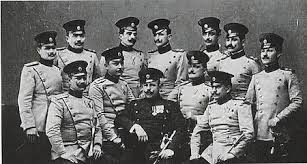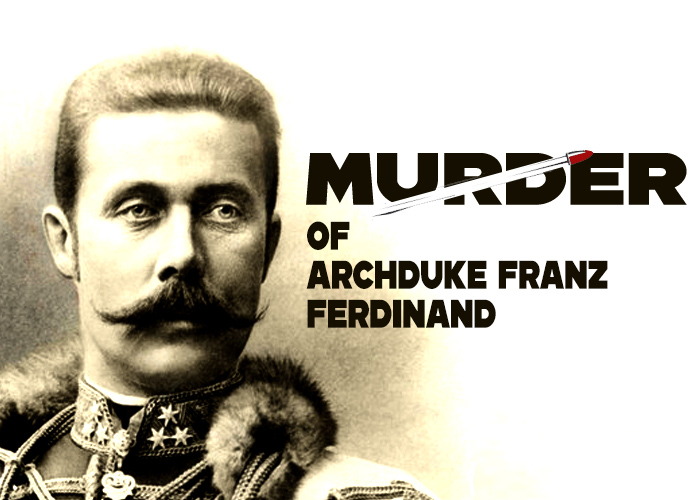Introduction
On June 28, 1914, a single gunshot changed the course of history. The assassination of Archduke Franz Ferdinand, heir to the Austro-Hungarian throne, in Sarajevo, Bosnia, set off a chain reaction that led to World War I (1914-1918). The killing, carried out by a young Bosnian Serb nationalist, Gavrilo Princip, was not just an act of rebellion but a moment that shattered the delicate balance of power in Europe. This article will explore the causes, events, aftermath, and impact of this assassination in detail.
Background: Tensions in Europe Before 1914
Austro-Hungarian Empire and Bosnia
By the early 20th century, Europe was a volatile mix of nationalism, imperialism, and militarism. The Austro-Hungarian Empire controlled many ethnic groups, including Serbs, Croats, and Bosnians. Many of these groups wanted independence or unification with other Slavic nations, particularly Serbia.
In 1908, Austria-Hungary annexed Bosnia and Herzegovina, angering Serbia, which saw itself as the protector of Slavic people. Tensions between Austria-Hungary and Serbia escalated, leading to secret nationalist movements forming in Bosnia, including the Black Hand, which would later play a crucial role in the assassination.
Archduke Franz Ferdinand: The Heir to the Throne
Franz Ferdinand was the nephew of Emperor Franz Joseph and heir to the Austro-Hungarian Empire. Unlike many other Austro-Hungarian leaders, he believed in reforming the empire and granting more autonomy to Slavic people. However, Serbian nationalists saw him as a symbol of foreign oppression.
The Assassination: June 28, 1914
The Visit to Sarajevo
On June 28, 1914, Franz Ferdinand and his wife, Sophie, Duchess of Hohenberg, traveled to Sarajevo to inspect military forces. This day was significant because it was Vidovdan, a Serbian national holiday commemorating the Battle of Kosovo (1389), a major event in Serbian history.
The Black Hand and the Assassination Plot
A secret Serbian nationalist group called the Black Hand, led by Dragutin Dimitrijević, wanted to assassinate Franz Ferdinand to weaken Austro-Hungarian rule over Bosnia. They recruited young Bosnian Serbs, including Gavrilo Princip, Nedeljko Cabrinovic, and four others, to carry out the attack.

The First Attempt: A Failed Bombing
As the royal couple’s car moved through Sarajevo, one of the conspirators, Nedeljko Cabrinovic, threw a bomb at the vehicle. The bomb bounced off the car, injuring members of the convoy but leaving Franz Ferdinand and Sophie unharmed. The attacker swallowed a cyanide pill, but it failed to work, and he was captured.
The Fatal Shooting
After the failed attack, the Archduke insisted on visiting the wounded in the hospital. However, due to a mistake, the driver took a wrong turn and stopped near a café where Gavrilo Princip was standing.
Princip stepped forward and fired two shots using a FN Model 1910 pistol:
- The first bullet hit Sophie in the abdomen, killing her instantly.
- The second bullet struck Franz Ferdinand in the neck, and he died within minutes.
Princip tried to shoot himself, but he was captured by police. He was later sentenced to 20 years in prison (he was too young for the death penalty) but died of tuberculosis in 1918.
Immediate Reactions and Consequences
Austria-Hungary’s Reaction
The Austro-Hungarian government blamed Serbia for the attack, claiming that Serbian officials supported the Black Hand. This led to a series of diplomatic exchanges that quickly escalated.
The July Crisis: The Path to War
Over the next month, tensions exploded:
- Austria-Hungary issued an ultimatum to Serbia with impossible demands.
- Serbia agreed to most but not all of the conditions.
- Austria-Hungary, backed by Germany, declared war on Serbia on July 28, 1914.
- Russia, allied with Serbia, mobilized its army.
- Germany declared war on Russia (August 1) and France (August 3).
- Britain declared war on Germany (August 4) after Germany invaded Belgium.
Thus, within a month, Europe was at war.
The Role of the Assassination in World War I
A Spark in a Tense Europe
The assassination did not directly cause World War I, but it was the spark that ignited long-standing tensions between European powers. The main underlying causes of the war were:
- Militarism: Nations were heavily armed and ready for war.
- Alliances: Europe was divided into rival camps (Triple Entente vs. Triple Alliance).
- Imperialism: Competition for colonies created rivalries.
- Nationalism: Many ethnic groups wanted independence.
How the War Unfolded
World War I (1914-1918) saw:
- Trench warfare, particularly on the Western Front.
- The use of new weapons like tanks, poison gas, and machine guns.
- Over 16 million deaths, making it one of the deadliest conflicts in history.
- The collapse of empires (Austro-Hungarian, Ottoman, Russian, German).
- The Treaty of Versailles (1919), which punished Germany and set the stage for World War II.
Long-Term Impact of the Assassination
- Redrawing of European Borders: The Austro-Hungarian Empire dissolved, and new nations (Yugoslavia, Czechoslovakia) were created.
- Rise of Communism: The Russian Revolution (1917) led to the formation of the Soviet Union.
- The League of Nations: Established to prevent future wars (but failed, leading to WWII).
- Deep Hostilities: The harsh treatment of Germany fueled resentment, contributing to World War II.
Conclusion
The assassination of Archduke Franz Ferdinand was one of the most consequential events in modern history. While tensions were already high, this single act of violence pushed the world into a devastating war. The repercussions shaped the 20th century, leading to further conflicts and shaping modern geopolitics.
The story of Sarajevo reminds us how one act, no matter how small, can change the world. It serves as a lesson in diplomacy, peace, and the dangers of unchecked nationalism.
Key Facts Summary:
- Who was killed? Archduke Franz Ferdinand and his wife Sophie.
- Where? Sarajevo, Bosnia.
- When? June 28, 1914.
- Who killed him? Gavrilo Princip, a 19-year-old nationalist.
- Weapon used? FN Model 1910 pistol.
- Immediate result? Austria-Hungary declared war on Serbia.
- Long-term result? World War I and massive geopolitical changes.
Would World War I have still happened without the assassination? Perhaps. But June 28, 1914, will always be remembered as the day the world changed forever.

